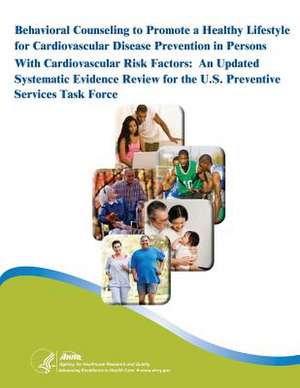Behavioral Counseling to Promote a Healthy Lifestyle for Cardiovascular Disease Prevention in Persons with Cardiovascular Risk Factors
Autor Agency for Healthcare Resea And Qualtiy, U. S. Department of Heal Human Servicesen Limba Engleză Paperback
Preț: 167.41 lei
Preț vechi: 176.22 lei
-5% Nou
Puncte Express: 251
Preț estimativ în valută:
32.03€ • 34.91$ • 26.99£
32.03€ • 34.91$ • 26.99£
Carte disponibilă
Livrare economică 02-16 aprilie
Preluare comenzi: 021 569.72.76
Specificații
ISBN-13: 9781505811742
ISBN-10: 1505811740
Pagini: 264
Dimensiuni: 216 x 279 x 14 mm
Greutate: 0.62 kg
Editura: CREATESPACE
ISBN-10: 1505811740
Pagini: 264
Dimensiuni: 216 x 279 x 14 mm
Greutate: 0.62 kg
Editura: CREATESPACE
